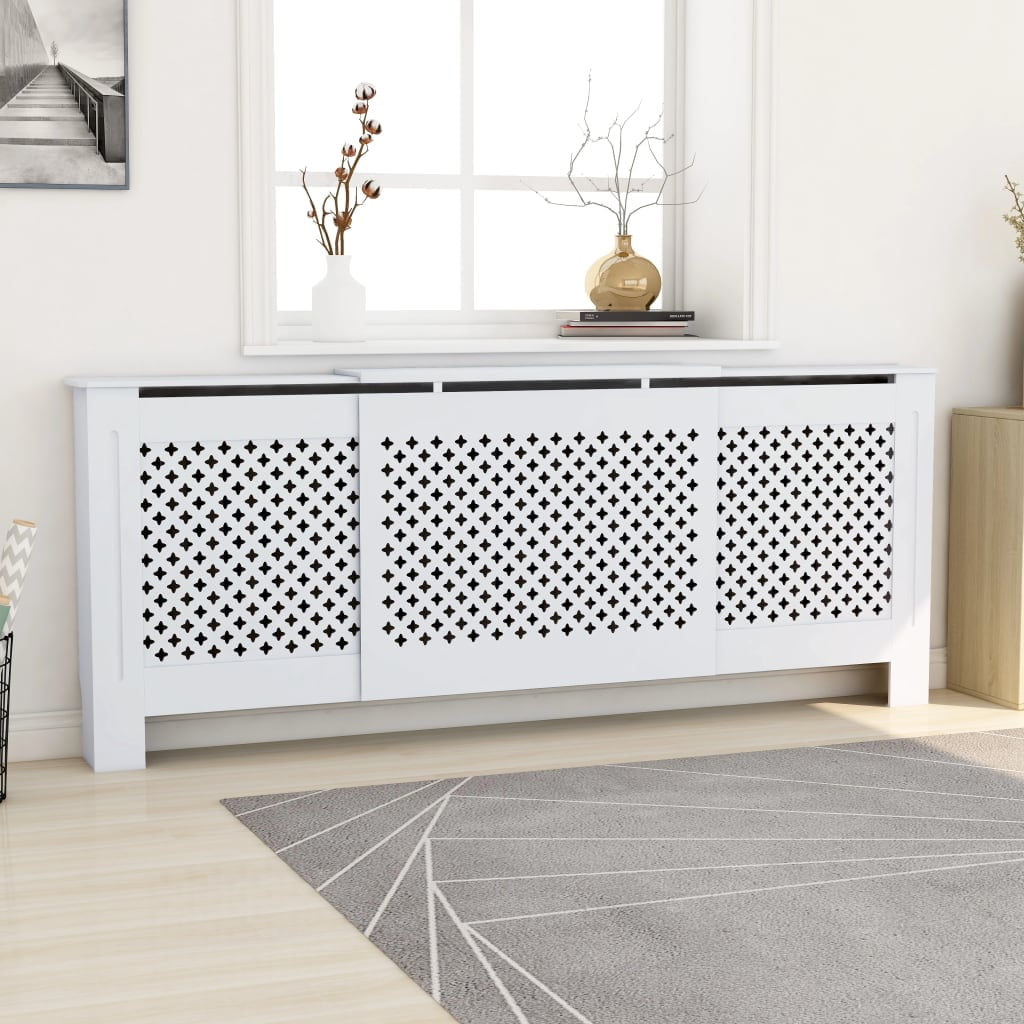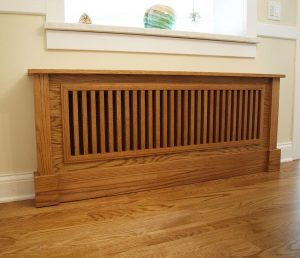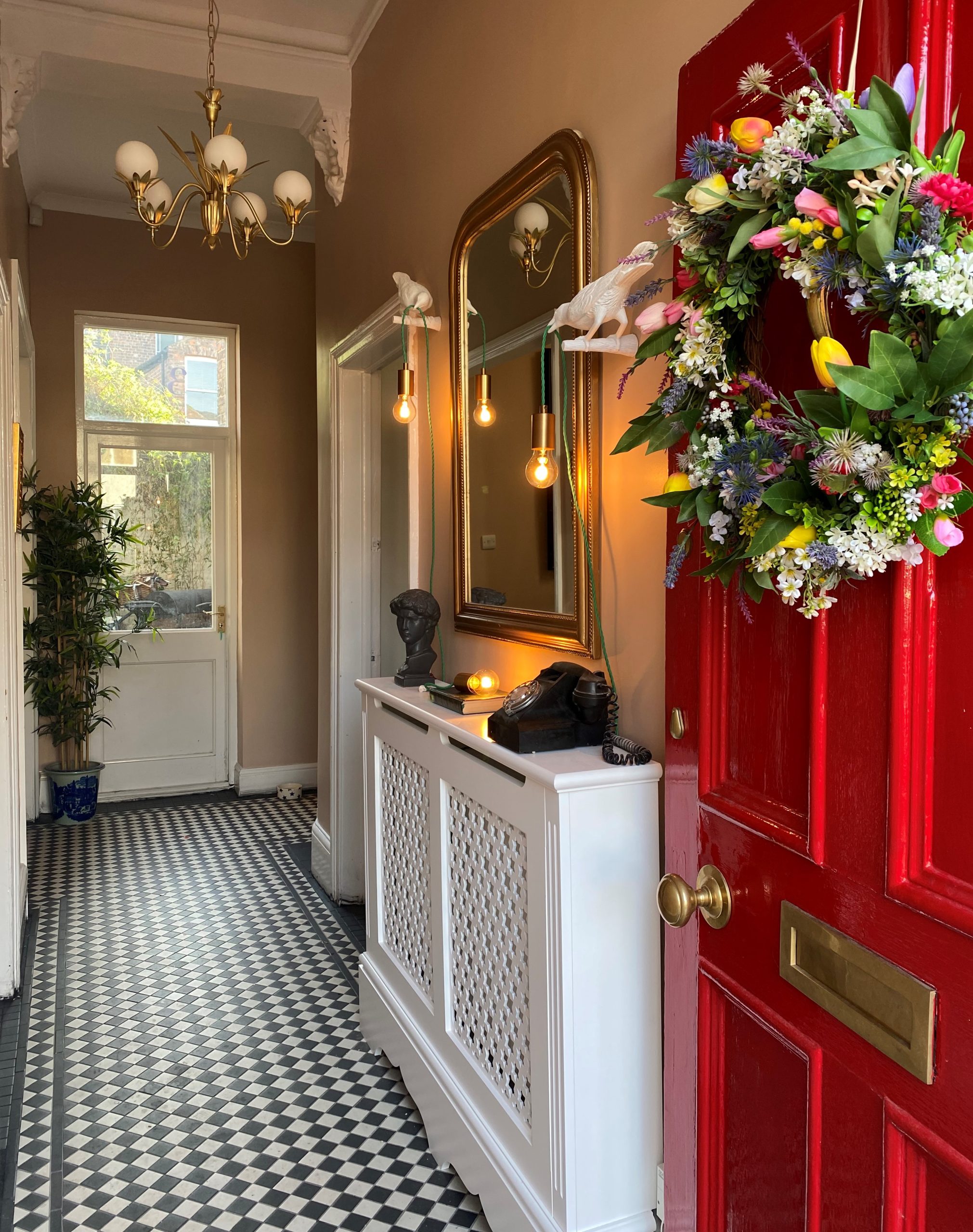What Most People Get Wrong About Custom Radiator Covers (And How to Fix It)
Trick Attributes to Consider When Selecting Custom-made Radiator Covers for Your Area
Selecting personalized radiator covers entails a number of vital factors. Material toughness is crucial for durability, while layout should balance with the existing decor. Dimension fit is vital for functionality and aesthetic appeals. Furthermore, considerations around warmth performance and air movement can impact efficiency. Nonetheless, the nuances of setup and maintenance usually remain forgotten. Recognizing these aspects will certainly guide you toward an informed decision that enhances your area easily. What various other aspects should be thought about?

Material Options for Personalized Radiator Covers
When choosing personalized radiator covers, the choice of products plays an essential role in both appearances and functionality. Different products are readily available, each with one-of-a-kind properties that accommodate different demands. Wood, as an example, offers a traditional look and can be easily tailored, but it may be prone to contorting in high moisture. Steel alternatives, such as aluminum or steel, offer sturdiness and warm resistance, making them ideal for high-heat environments. custom radiator covers.For those looking for a modern-day touch, MDF (medium-density fiberboard) is a preferred selection; it can be painted or finished to match any type of decoration while remaining cost-efficient. Additionally, some might decide for acrylic, which permits imaginative styles and transparency, although it may not be as heat-resistant. Inevitably, the selection of product significantly affects not only the cover's appearance yet also its durability and efficiency in efficiently managing heat output
Style Styles to Match Your Home Decor
Although radiator covers offer a useful function, their style can substantially improve the overall visual of a space. Homeowners can choose from various designs to perfectly integrate these covers into their existing decor. For a contemporary appearance, streamlined steel or minimal wooden designs offer a clean, modern ambiance. In comparison, standard homes may gain from ornate wood covers with complex carvings that mirror traditional craftsmanship.Farmhouse styles typically incorporate rustic components, using reclaimed wood for a cozy, inviting touch. For those who choose a diverse technique, bold shades and patterns can be employed to create a declaration piece that draws the eye.Additionally, integrating decorative grilles or open layouts can permit for air flow while adding aesthetic rate of interest. Selecting a layout that complements the overall theme of the home assurances that the radiator cover comes to be not simply a useful aspect but also a fashionable prime focus within the area.
Dimension and Fit Considerations
How can homeowners ensure their customized radiator covers fit perfectly within their spaces? Exact measurements are vital for achieving a seamless fit. House owners must begin by measuring the length, size, and height of their radiators, taking into account any type of extending components such as valves or pipelines. Additionally, it is vital to take right into account the surrounding room, ensuring that the cover does not obstruct air movement or hinder furniture placement.Choosing the appropriate product and style can also affect fit; as an example, some products may need details densities to guarantee strength. Property owners must additionally think of the desired design of the room, ensuring that the cover complements existing decor while suitable comfortably in the assigned area. A well-measured and thoughtfully made cover not just enhances looks yet additionally guarantees efficient heating by permitting appropriate air flow around the radiator.
Installation Refine and Demands
To ensure a successful installation of personalized radiator covers, cautious planning and interest to information are vital. One need to precisely measure the radiator measurements and bordering area to confirm a correct fit. Next, choosing the right materials is essential; options might consist of wood, metal, or composite materials, each requiring details devices and methods for installation.Before beginning the installation, it is recommended to collect all required devices, such as drills, screwdrivers, and brackets, to enhance the process. The installment area must be cleared of barriers for security and efficiency.Once all set, the personalized covers can be securely installed, making sure that they are leveled and aligned correctly. Complying with supplier guidelines throughout this phase is imperative to stay clear of any type of architectural problems. A comprehensive inspection must be conducted to verify that the covers are safely affixed and visually appealing, adding to the general visual of the space.
Warmth Efficiency and Air Flow
When picking custom radiator covers, heat performance and air movement are important aspects to contemplate. Proper ventilation design warranties optimal warmth distribution throughout a room, avoiding cool spots and optimizing comfort. Attention to these elements can significantly improve the total performance of a heating system.
Optimum Warmth Distribution
Perfect warmth circulation is essential for preserving a comfy interior atmosphere, and custom-made radiator covers can greatly boost this process. custom radiator covers. These covers are designed not just for aesthetics however likewise to optimize heat effectiveness. By guiding cozy air efficiently throughout the space, they prevent cool areas and assure that warmth distributes uniformly. Properly developed covers can help with airflow while decreasing blockage, allowing cozy air to increase and disperse normally. Additionally, the materials used in customized radiator covers can impact warmth retention and output. Picking covers that stabilize layout and performance is crucial, as they can add noticeably to a home's general home heating effectiveness, enhancing convenience and potentially reducing power expenses in the long run
Air Flow Style Considerations
Efficient ventilation layout is necessary for guaranteeing excellent warmth effectiveness and airflow precede with radiator covers. When selecting a custom-made cover, it is essential to take into consideration attributes that assist in unobstructed air activity. Grilles and vents ought to be strategically put to permit warm air to flow openly while preventing getting too hot. Additionally, the material of the cover can affect airflow; light-weight materials frequently promote much better ventilation contrasted to heavier alternatives. The style ought to likewise account for keeping excellent ranges between the cover and radiator to boost efficiency. Inevitably, a properly designed radiator cover will not only improve the visual charm of a room yet likewise add to efficient home heating, creating a much more comfy environment.
Personalization and Personalization Features

Upkeep and Treatment Tips for Long Life
Preserving custom-made radiator covers is vital for their long life and appearance. Normal dusting practices, the use of proper cleaning options, and seasonal examinations can considerably boost their durability. Executing these treatment tips guarantees that the covers continue to be practical and aesthetically appealing over time.
Regular Dusting Practices
Routinely dusting custom-made radiator covers is important for protecting their look and functionality. Dirt accumulation can block air movement, potentially influencing the radiator's efficiency. It is suggested to implement a constant dusting routine, preferably as soon as a week, to avoid accumulation. A soft microfiber towel or a duster is suggested for this job, as these products efficiently catch dirt without scratching the surface. Treatment needs to be taken to cleanse the locations surrounding the radiator cover too, guaranteeing that no dust is left to settle. For homes with pet dogs or high foot web traffic, even more constant dusting may be necessary. This simple upkeep method not only enhances the aesthetic appeal however also adds to the longevity of the radiator cover.
Suitable Cleaning Solutions
Picking suitable cleaning remedies is essential for the durability of personalized radiator covers. Homeowners should select mild, non-abrasive cleansers to stop damage to the surface area finish. Moderate soap blended with warm water is typically efficient for general cleansing, while staying clear of rough chemicals that might remove the material. A soft cloth or sponge is recommended for application, making certain that no abrasive products are utilized that might scrape the cover. It's crucial to dry the cover completely after cleaning up to avoid wetness buildup, which can bring about rust or mold. Regular upkeep with ideal cleaning products not just enhances the look of the radiator covers however likewise extends their lifespan, guaranteeing they stay a visual and practical component of the room.

Seasonal Evaluation Tips
Although custom-made radiator covers are designed for sturdiness, carrying out seasonal evaluations is important for ensuring they click this site continue to be in ideal problem. Homeowners must begin by checking for any indications of damage, such as damages, scrapes, or rust. Additionally, confirming that the cover fits comfortably and firmly around the radiator is necessary, as loose installations can result in inefficiencies. Throughout assessments, dust and debris must be removed to stop buildup that can block air movement. Examining for moisture or mold and mildew is essential, as these can compromise the cover's stability. Lastly, analyzing the paint or finish for wear permits timely touch-ups, enhancing both visual appeals and longevity. Regular examinations assist keep performance and look while lengthening the lifespan of customized radiator covers.
Regularly Asked Inquiries
Can I Use Personalized Radiator Covers in Outdoor Spaces?
The question of utilizing personalized radiator covers in outdoor spaces emerges frequently. Generally, these covers are developed for interior use, as exterior problems can damage materials and influence functionality, making them inappropriate for exterior atmospheres.
What Is the Ordinary Price of Personalized Radiator Covers?
The ordinary price of custom-made radiator covers generally ranges from $200 to $800, depending upon products, dimension, and style complexity. House owners must consider their spending plan and visual preferences when deciding.
Exist Eco-Friendly Material Options Available?
The inquiry concerning environment-friendly product options revealed that numerous sustainable materials, such as reclaimed timber, bamboo, and recycled steels, are readily available for custom radiator covers, appealing to environmentally aware customers looking for responsible and stylish home solutions.
Just how Do I Clean Elaborate Layouts on Radiator Covers?
Cleansing detailed styles on radiator covers requires a mild technique. Soft fabrics or brushes with mild soap and water can effectively eliminate dust and gunk, making certain that the fragile details remain intact while preserving the cover's look.
Do Personalized Radiator Covers Minimize Noise From the Heating System?
Personalized radiator important site covers can help decrease sound from heating systems by moistening resonances and noise. Their design frequently consists of shielding materials, which additionally minimizes audio transmission, creating a quieter and extra comfortable atmosphere in the space. When choosing personalized radiator covers, the option of products plays an essential function in both aesthetic appeals and functionality. Additionally, the products used in personalized radiator covers can influence heat retention and outcome. Effective ventilation style is important for ensuring suitable heat effectiveness and air movement in spaces with radiator covers. Customized radiator covers are developed for sturdiness, performing seasonal assessments is important for ensuring they remain in optimal problem. The average expense of personalized radiator covers generally ranges from $200 to $800, depending on materials, dimension, and design complexity.